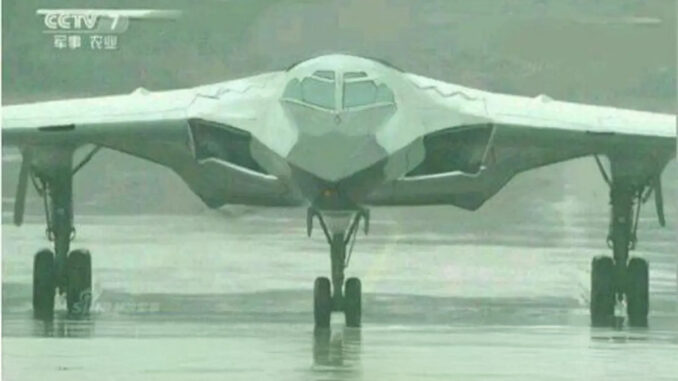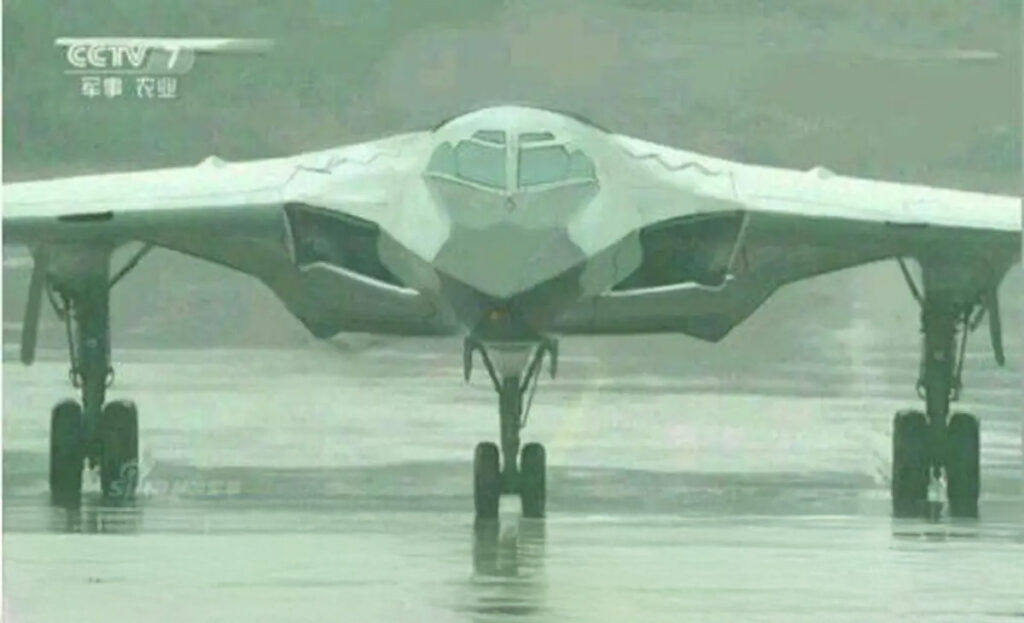
The Chinese H-20 is causing concern because of its range of 8,500 km and its stealth capabilities, which are comparable to those of the American B-2. Detailed technical analysis.
The H-20, China’s new strategic bomber, is attracting attention for its long-range strike capabilities and stealthy design. Inspired by the American B-2 Spirit, it has similar features, such as a smooth fuselage and buried engines to reduce the heat signature. With a range of 8,500 km, the H-20 can strike targets well beyond the first lines of defence, including the Pacific region. However, many questions remain about the real effectiveness of its stealth and defence systems. A comparison with the American B-2 and B-21 highlights the challenges that China still has to overcome in terms of stealth technology and thermal management to compete with the American aircraft.
The H-20’s stealth design: inspiration from the B-2 Spirit
The design of the Chinese H-20 bomber is reminiscent of the famous American B-2 Spirit. This choice is not insignificant, since the B-2, with its flying wing and stealth configuration, is a world benchmark for invisible bombers. The H-20 adopts a similar approach, with an integrated fuselage, curved air intakes and ‘buried’ engines to reduce its thermal signature. This configuration is designed to minimise radar returns, making the aircraft more difficult to detect.
However, stealth is not just about looks. Radar absorption capacity is a key factor in assessing the effectiveness of a stealth aircraft. The materials used by China for the H-20 are not fully known, and it remains to be seen whether they are comparable to those used on American bombers. For example, the absorbent coatings used by the B-2 and B-21 are advanced technologies developed over several decades. It is therefore likely that China still has some way to go in this area to achieve a similar level of stealth.
Heat management is another key aspect of stealth. Engines embedded in the structure reduce the heat emission visible to infrared sensors. However, the H-20’s ability to manage this heat effectively remains a matter of speculation. To be truly stealthy, an aircraft must align its temperature with that of the surrounding atmosphere, making detection by thermal sensors much more difficult. This is an area in which the B-2 excels, and it is still uncertain whether the H-20 can compete in this respect.
Operational range of the H-20: a new long-range threat
One of the most worrying features of the H-20 is its operational range, estimated at 8,500 km. This is slightly more than the range of the B-2 Spirit, which is around 6,700 miles (or around 10,800 km). If these figures are confirmed, the H-20 could threaten targets over considerable distances, thereby increasing the areas under threat from a Chinese attack. In particular, this range would enable China to extend its strike capabilities beyond the second island chain, including strategic areas such as the South China Sea.
The H-20 would thus be capable of striking targets in remote areas, changing the strategic balance in the Pacific and beyond. Such an aircraft, if equipped with long-range missiles or nuclear warheads, would pose a major challenge to the missile defence systems of the United States and its allies. At present, few details are available on the types of weapons that the H-20 could carry, but it is likely that it would be capable of carrying cruise missiles and precision-guided bombs, increasing its flexibility and destructive potential.
In addition, this considerable range would enable China to project its power into areas where its military presence is currently limited. This includes not only the Indo-Pacific region, but also potential targets in Europe and North America. The ability of an aircraft to cover such distances without refuelling is an undeniable strategic asset, especially in the context of stealth operations.

Stealth capability and technological challenges
The success of a stealth bomber depends not only on its design and range, but also on its ability to remain undetected throughout its mission. An aircraft like the H-20, if it is to compete with the B-2 or the future B-21, must be able to fool both engagement and surveillance radars. Engagement radars are designed to precisely target a threat, while surveillance radars simply detect the presence of a flying object without necessarily being able to target it.
American bombers are designed to evade both types of radar, appearing to enemy systems as simple, non-threatening objects, often compared to birds in the air. This ability is based on the absence of vertical structures, protruding edges and antennae that could reflect a radar signal. The question remains as to whether the H-20 has reached this level of sophistication in reducing radar signatures.
Furthermore, flight speed and altitude play a crucial role in a bomber’s survivability. An aircraft flying at high altitude and speed is more difficult for air defence systems to target. The B-2 is designed to fly at an altitude of 15,000 metres (50,000 feet), which puts it beyond the reach of many defence systems. It is still uncertain at what altitude and speed the H-20 will be able to operate, but these parameters will be essential in assessing its ability to avoid airborne threats.
Mission systems and real-time processing capabilities
In addition to stealth, a bomber’s ability to rapidly process information and adjust its missions in real time is essential to maximise its effectiveness. The H-20 must be able to receive and process data from multiple sources, whether satellites, drones or other aircraft. This would enable the bomber to adapt its targets to changing conditions on the ground, reducing the need to stay in a danger zone for long periods.
Modern bombers, such as the B-21 Raider, are equipped with advanced processing systems that allow them to modify their trajectory or select new targets mid-flight. These capabilities are essential to avoid detection by enemy defence systems. If the H-20 manages to incorporate similar processing capabilities, it could become a more unpredictable threat that would be harder to counter.
Although the H-20 represents a significant advance in China’s military arsenal, several aspects of its performance remain uncertain. Its stealth, range and ability to process information in real time will determine whether it can compete with American bombers, particularly the B-2 Spirit and the future B-21 Raider. If China succeeds in overcoming these technological challenges, the H-20 could redefine the global strategic balance when it comes to stealth bombers.
War Wings Daily is an independant magazine.